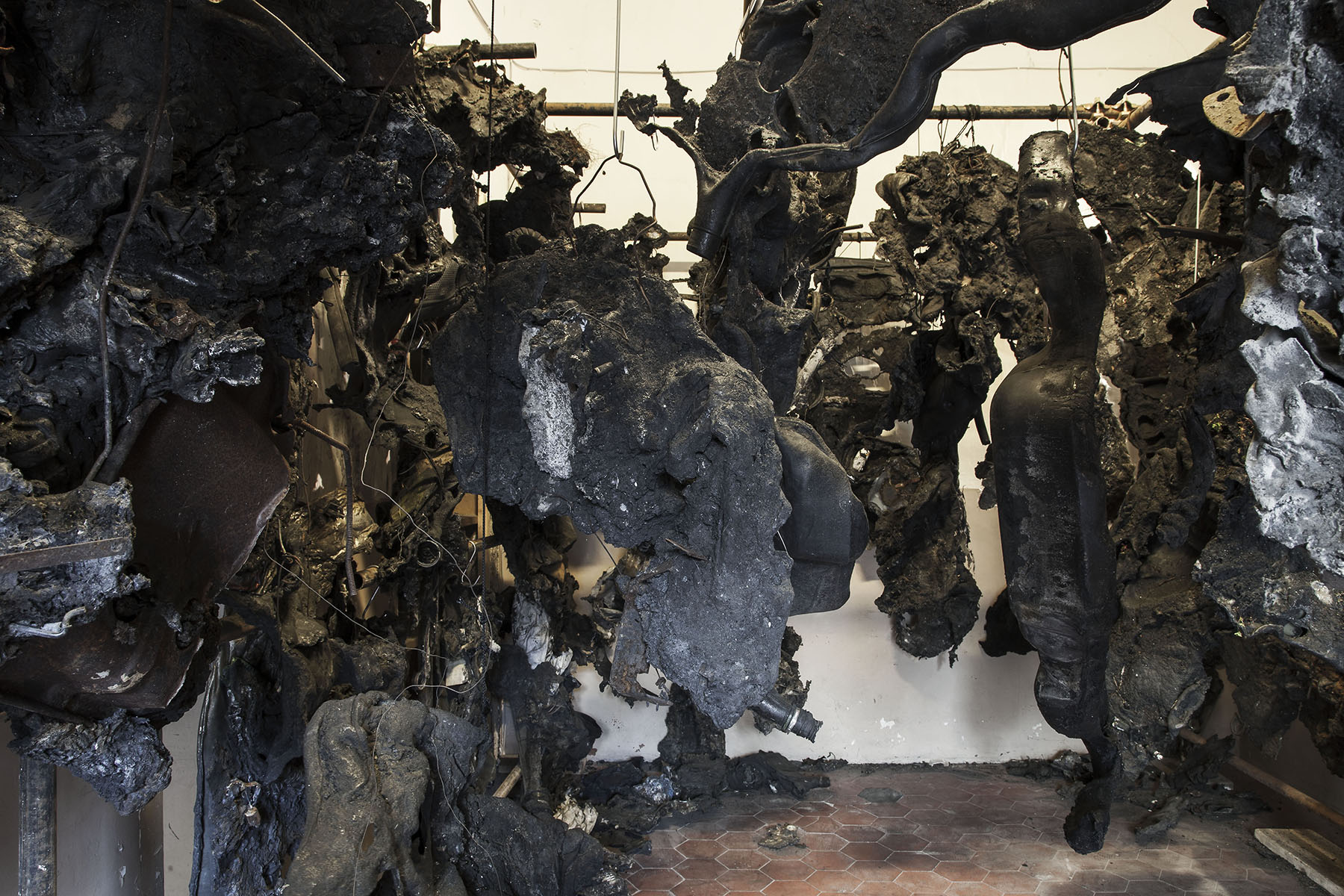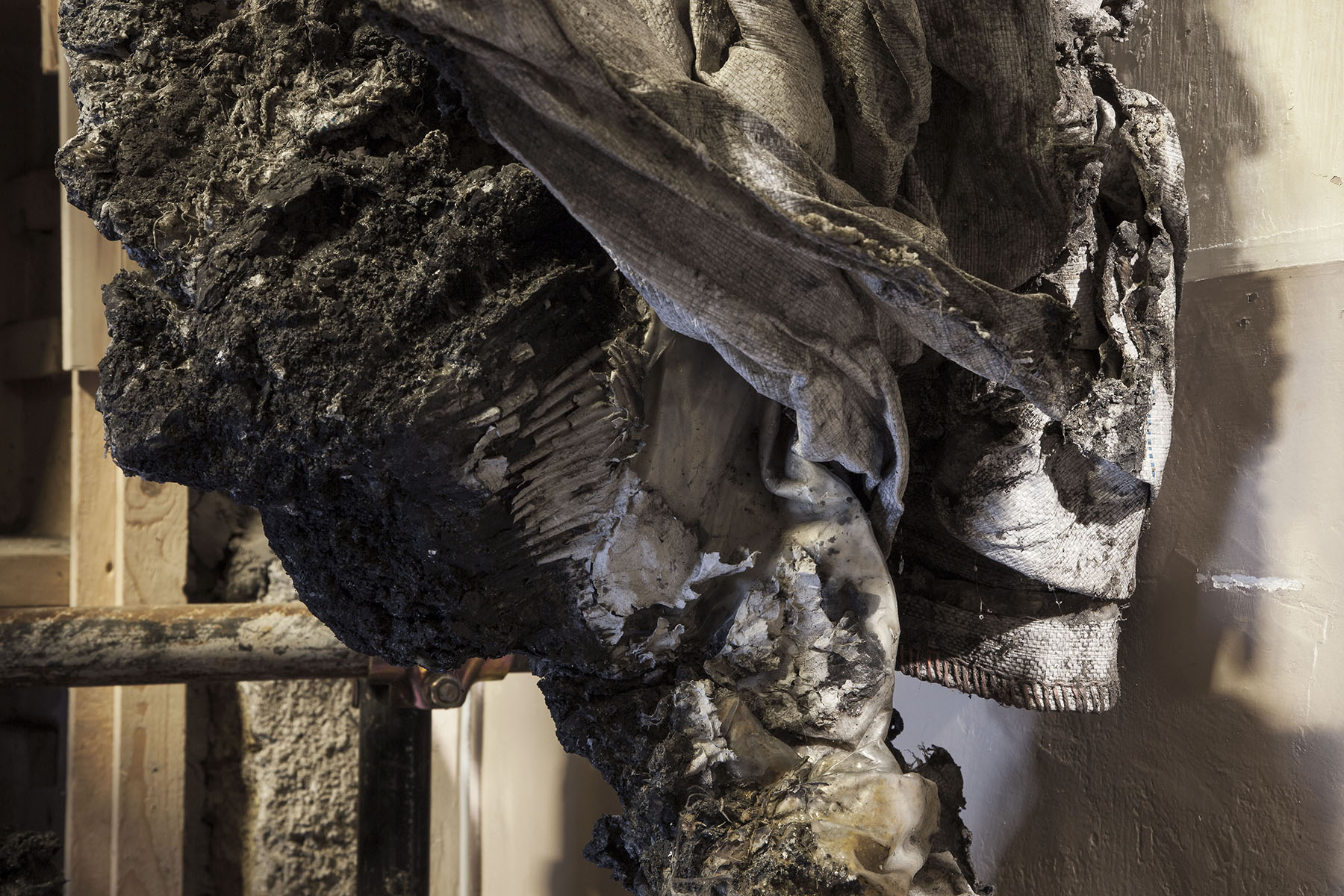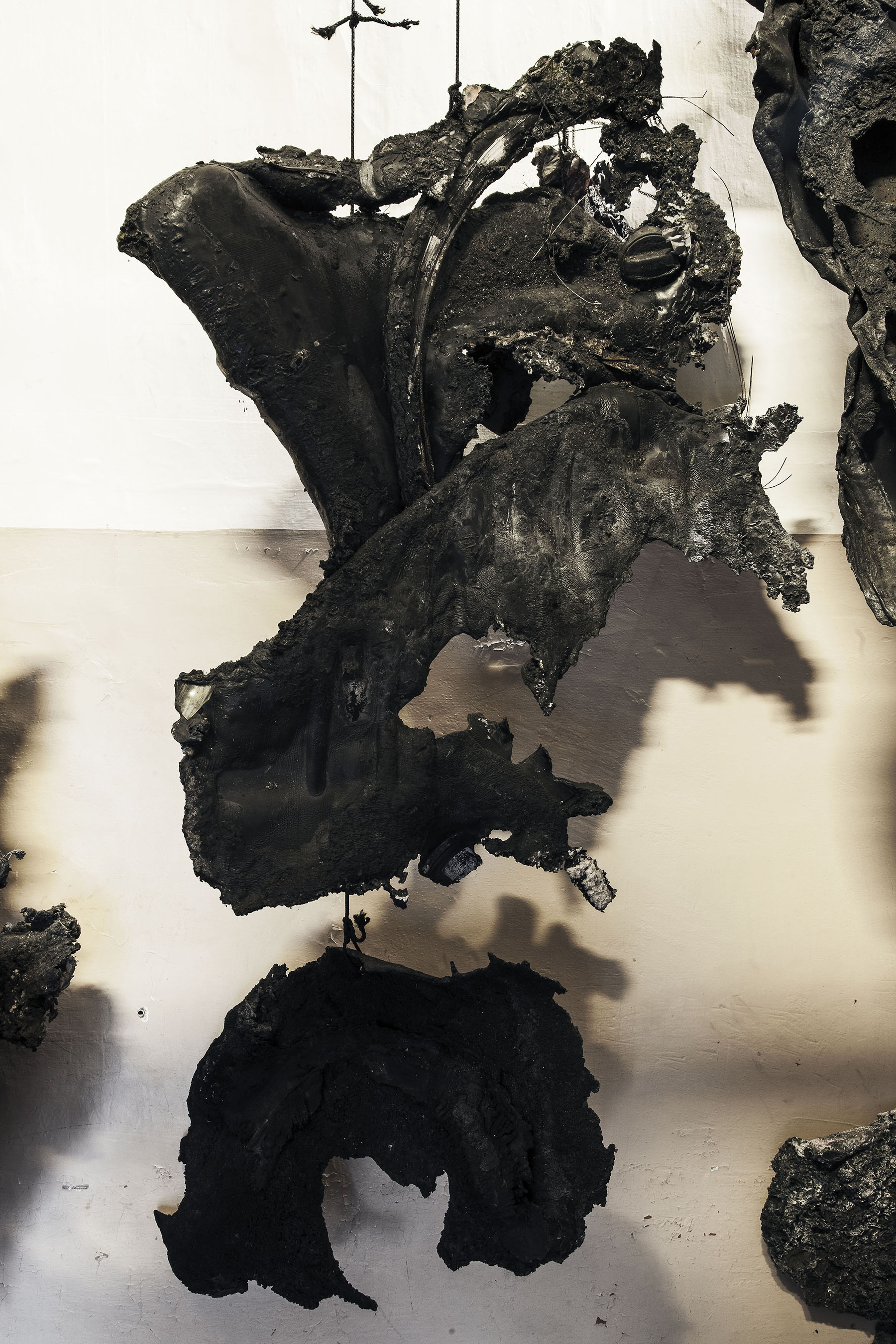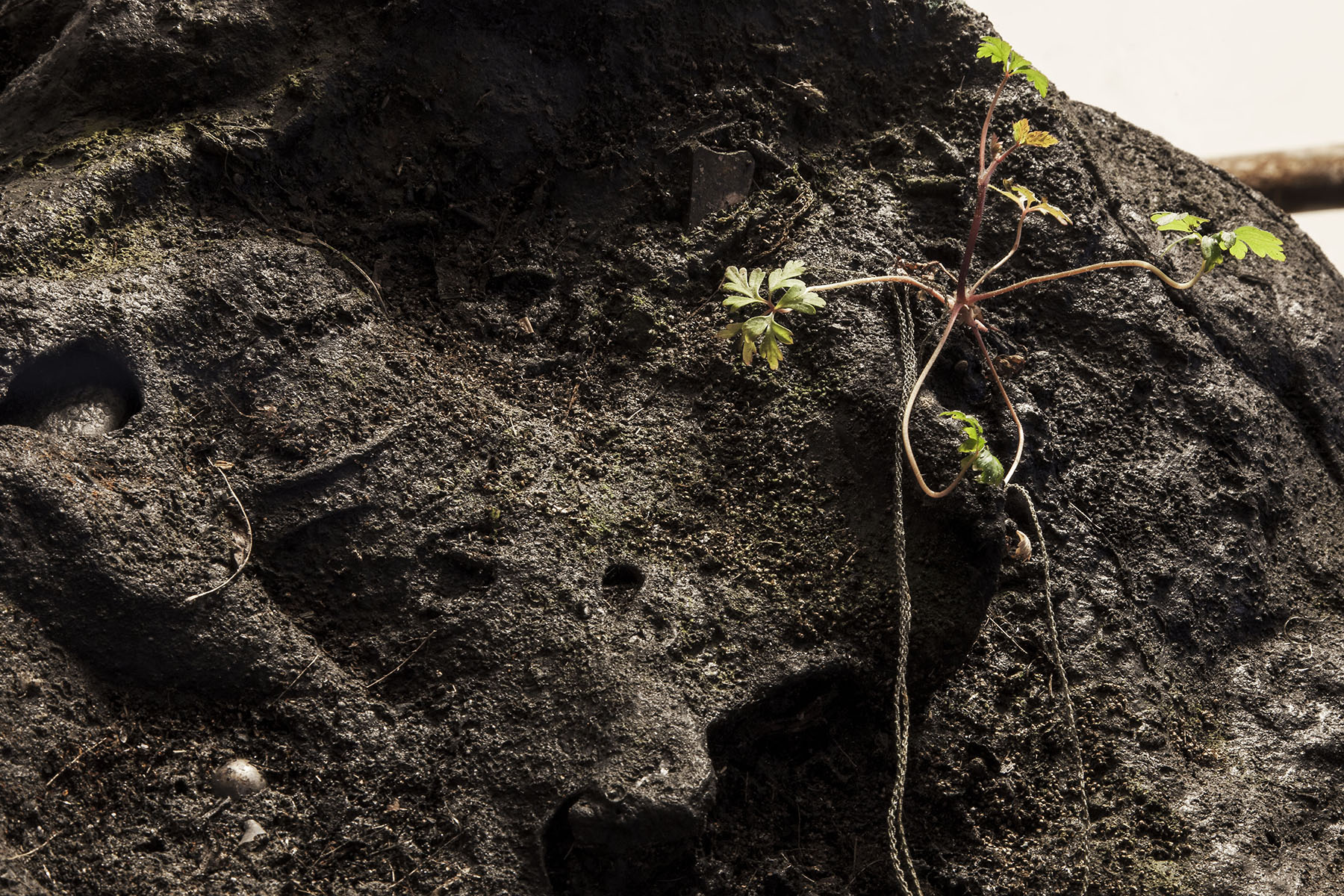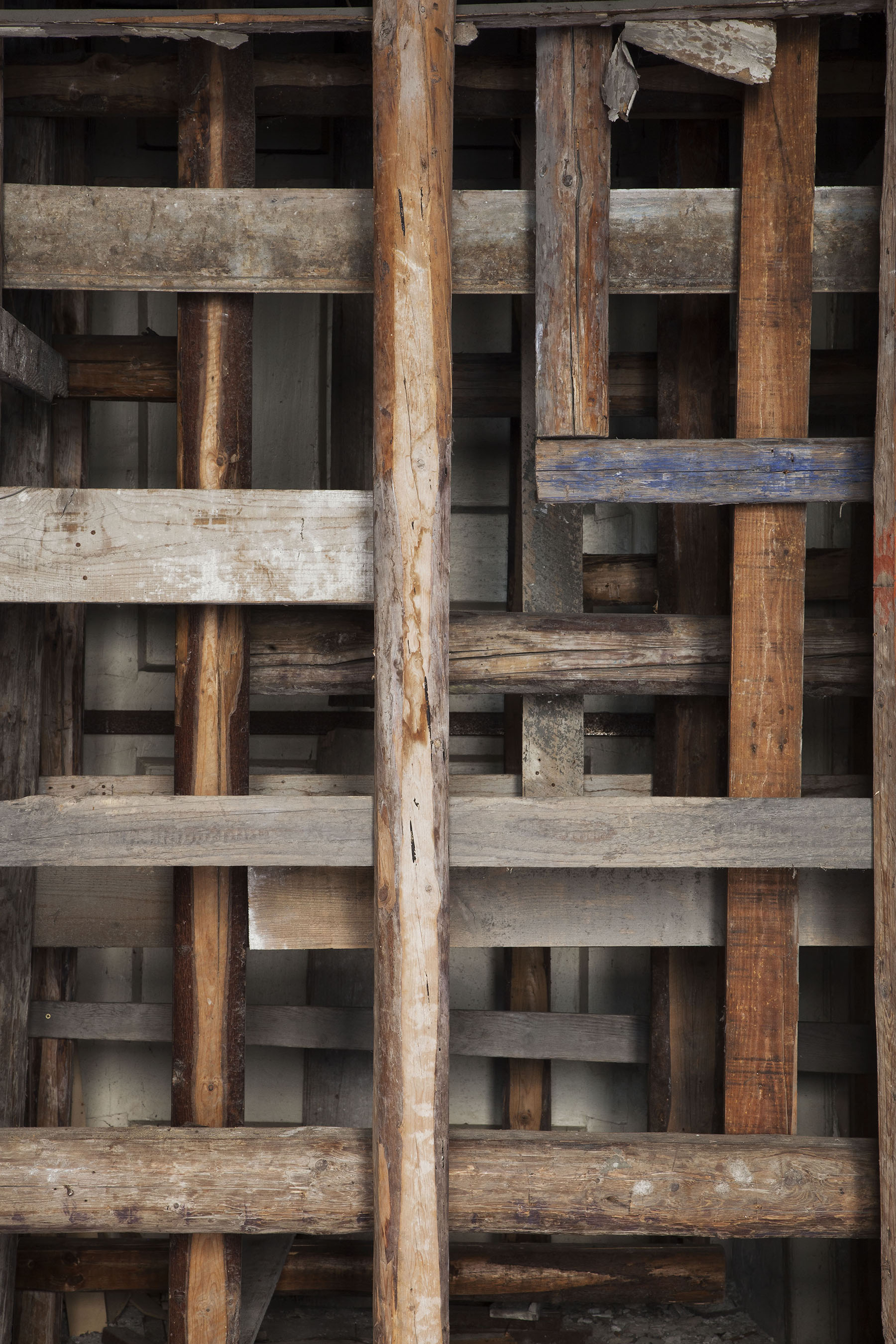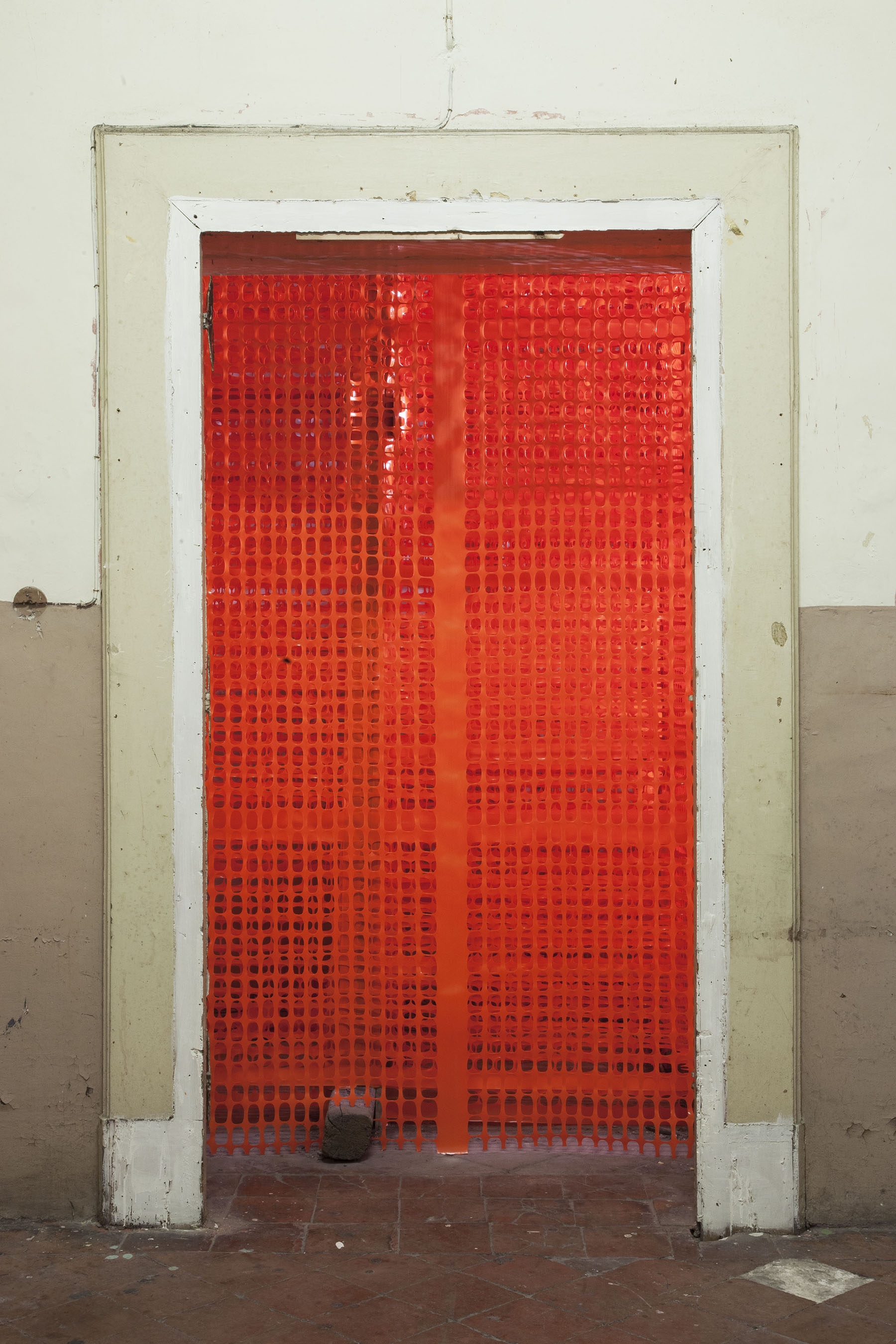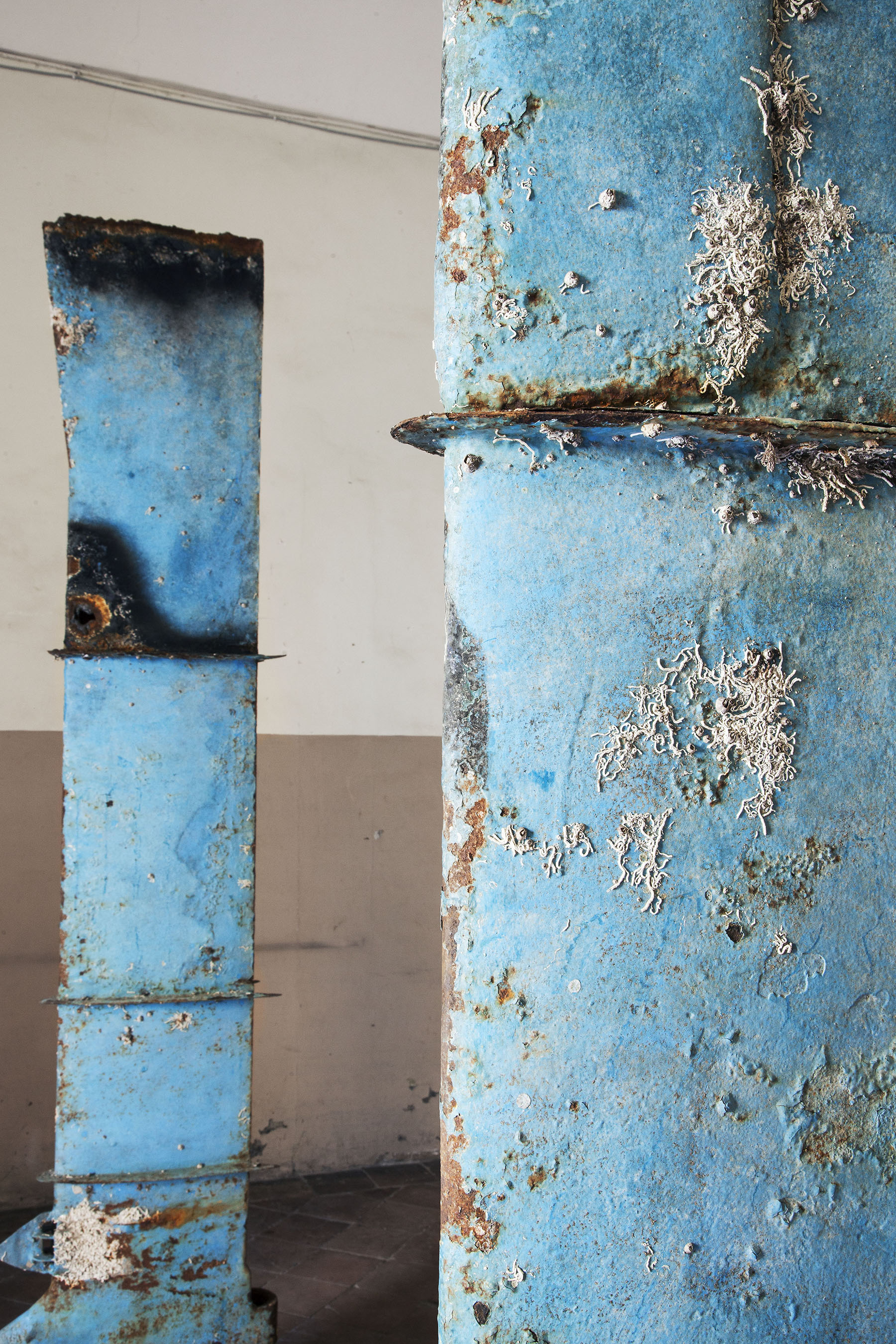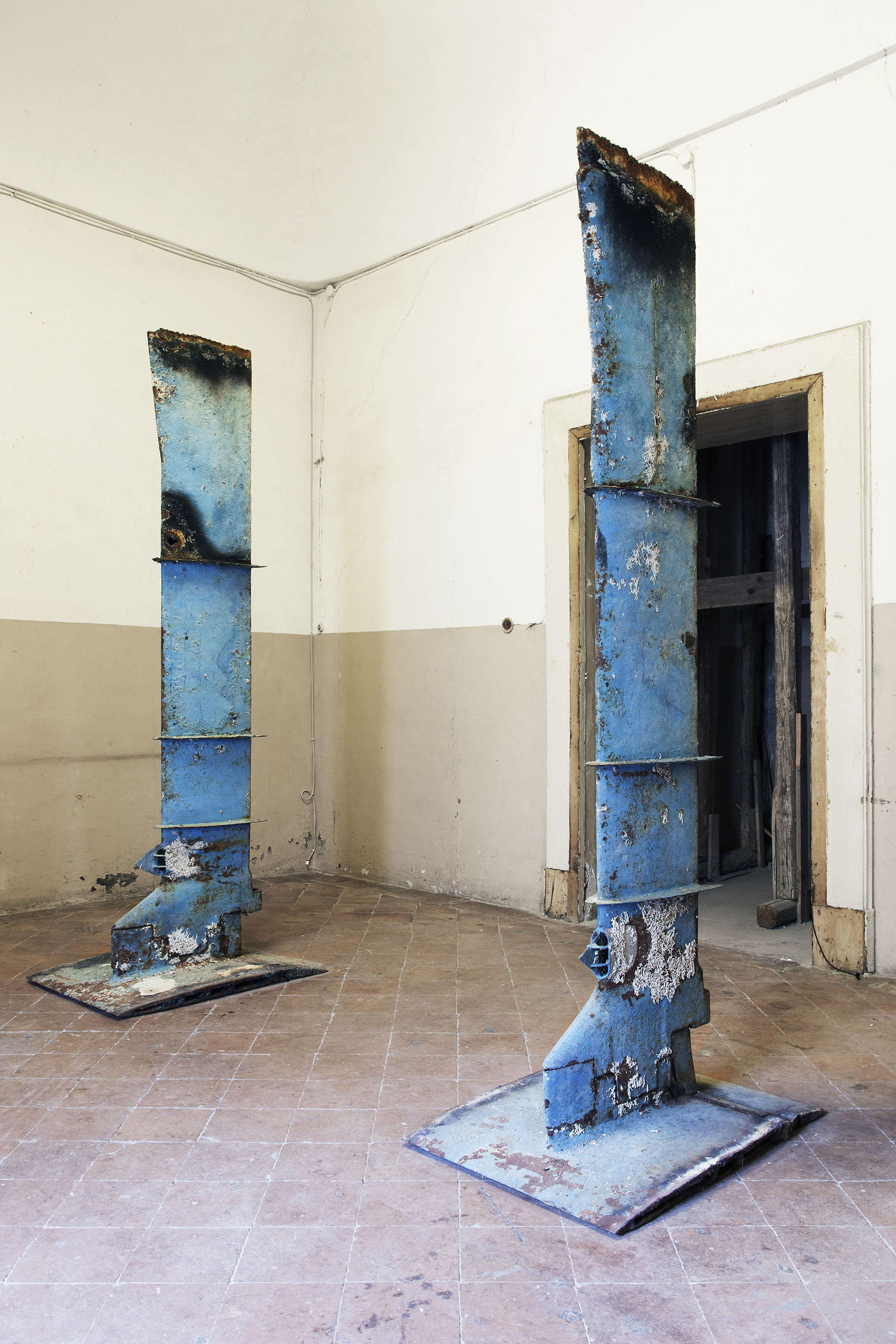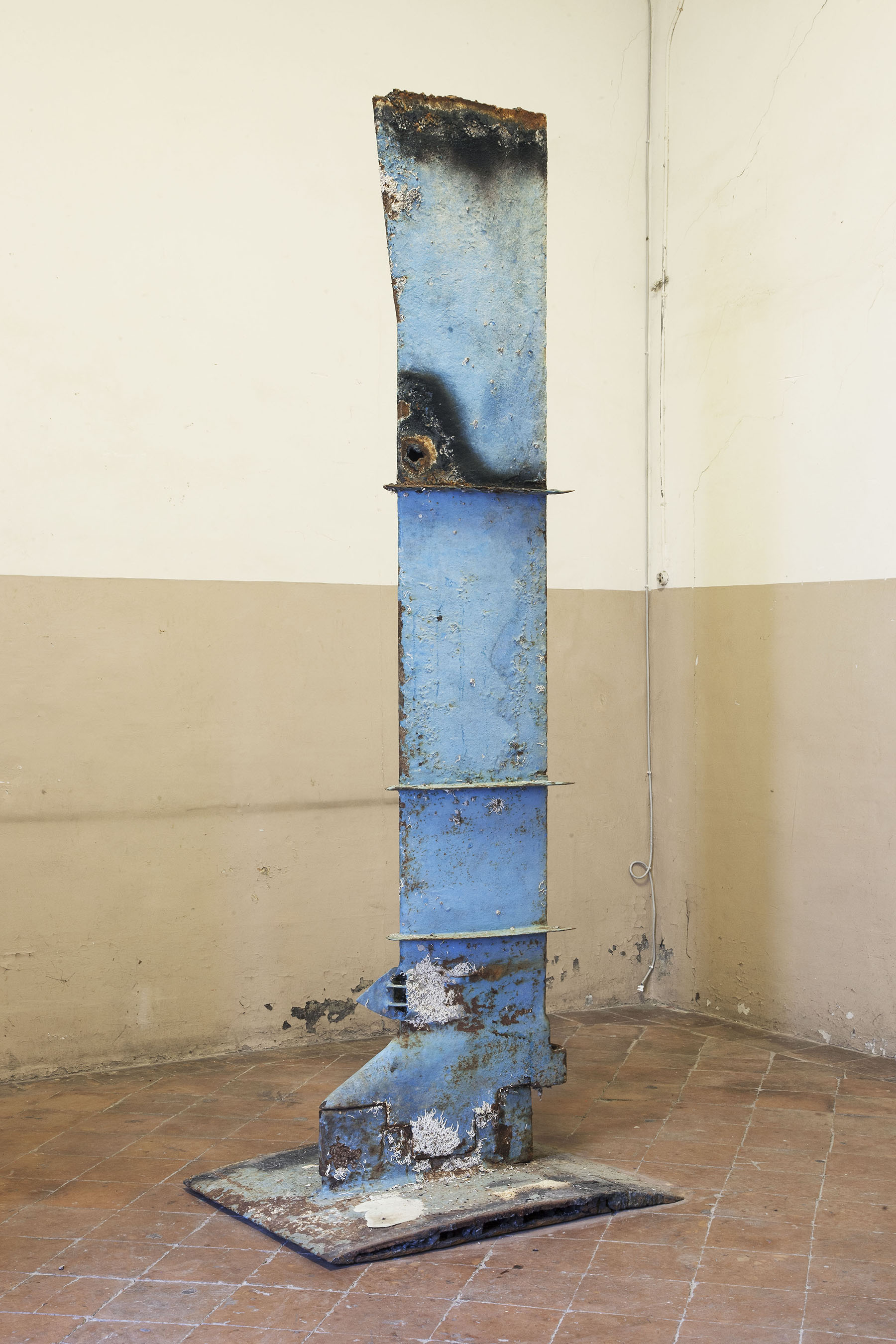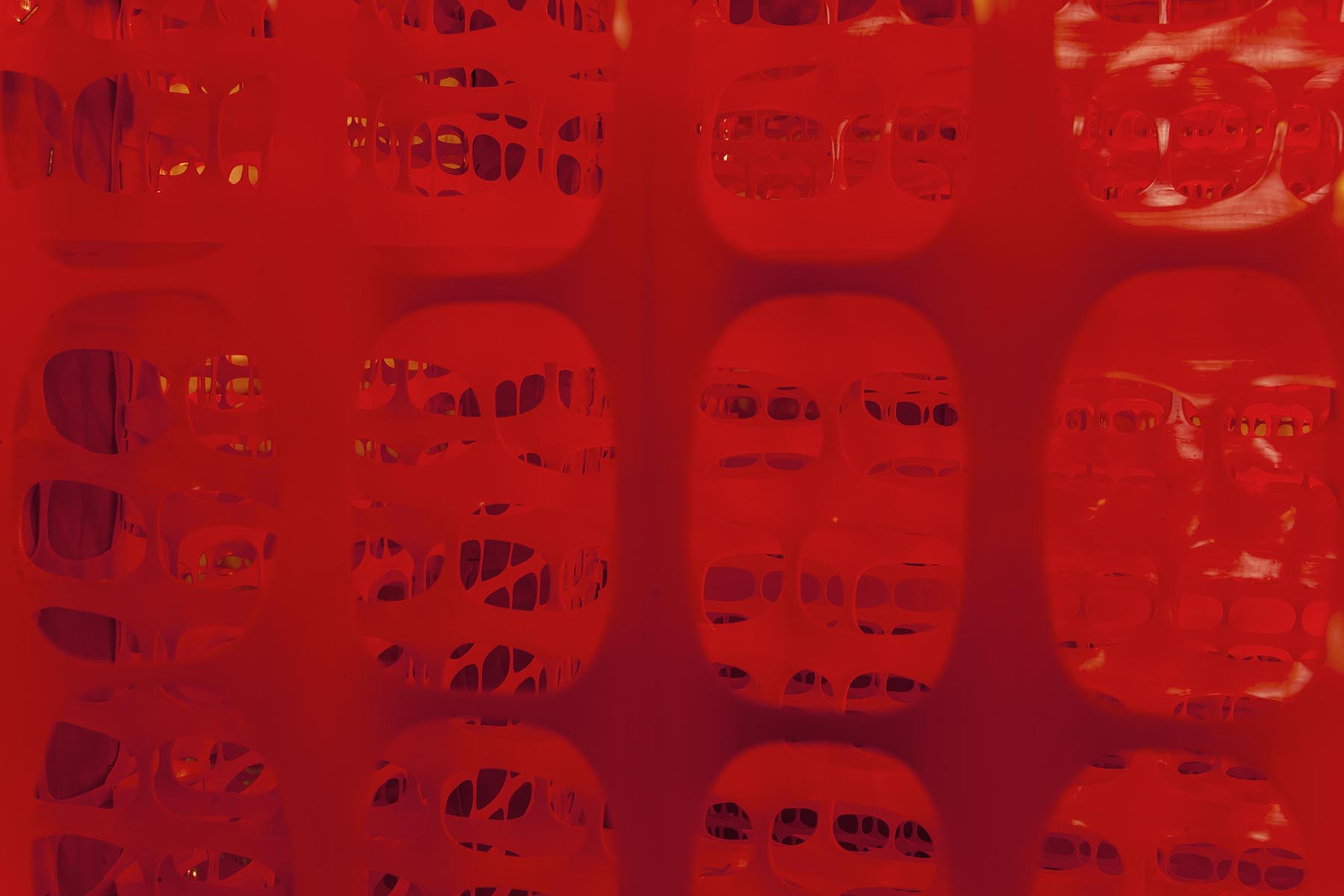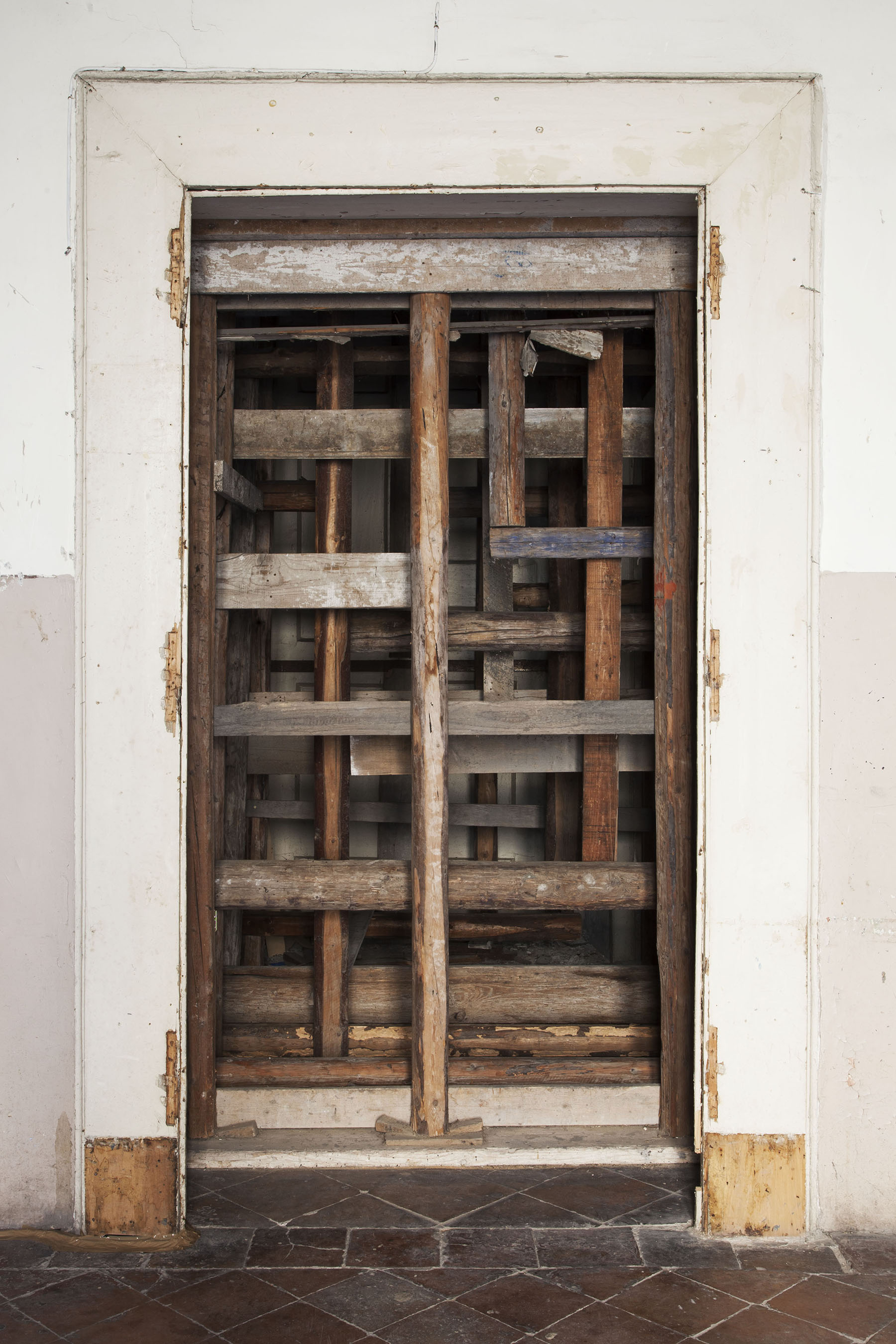04.04.2013 \\ 07.06.2013
Featuring new solo projects by Max Frisinger (Berlin) and Shana Moulton (New York), Fondazione Morra Greco is proud to present the first installment of a series of exhibitions entitled Hybrid Naples: L’ordine delle idee deve procedere secondo l’ordine delle cose.
The main title of the series reflects on the city of Naples as a continuously rebuilt monument to hybridity. “The open city feels like Naples, the closed city feels like Frankfurt”, wrote Richard Sennett in 2006. Naples here is understood as a city remaining adaptable by improvisation, accommodating diversity and dissonance (for better or worse) rather than over-determined homogenization. But rather than just a current state of things, the idea of an ‘open’, hybrid Naples also implies 3000 years of history: of a place where Greek, Etruscan, Roman, Spanish, German, Dutch, and many other presences have left their mark.
As a cultural reality and technique, hybridity – the crossing and intermingling of different cultural influences and elements – has become a factor dramatically accelerated by contemporary technological environments, from the importance of social media to artists using affordable digital technology. It directly affects what today we understand as being contemporary art: potentially, anything. However, this broadness of possible methods and motifs for current artists should not be understood as randomness. This is what the subtitle of the show is meant to remind of: “the order of ideas must follow the order of things”. It is a quote by the great Neapolitan philosopher Giambattista Vico (1668–1744). It stems from his famous main work Scienza nuova (New Science, 1725), in which he argues that civilization develops in recurring cycles. This axiom “the order of ideas must follow the order of things” asks us to consider that the shared experience of the conditions under which we live gives rise to shared ideas – rather than the other way round (an anticipation of Karl Marx’ famous “being determines consciousness”).
Taking this thought as a cue for the exhibition, it means that the artist’s experience and its reflection in their internal thought processes will give rise to the ideas expressed in their respective projects – rather than these ideas being randomly preconceived products ‘parachuted in’, or merely being the outcome of prescriptive instructions by a curator demanding illustrations of hybridity or any such thing.
The first installments by Max Frisinger and Shana Moulton are cases in point. Both artists work with a dizzying variety of methods and motifs, yet their “order of ideas” clearly follows an ‘”order of things” – even if that order is quite unusual or eccentric.
While Frisinger’s pieces will mainly occupy the first floor of the Foundation building, Shana Moulton’s video projections and sculptures will be on display in the basement.
Berlin-based Frisinger’s approach for years now has involved him collecting, usually at night, stuff he finds on the streets, using them as raw material for intricate, complex installations. The seeming casualness of that approach belies the fact that this technique is actually a crafty sculptural one and requires a concrete, cognitive-haptic procedure. It involves compositional decisions that recall abstract-gestural painting – minus the smearing and shaping of wet paint. In contrast to painting, all objects add their concrete ‘real life’ voices to the abstracting process of composition. More recently, and especially with the project at Fondazione Morra Greco, the artist has shifted his methodology from roaming and collecting to rearranging and multiplying: the pieces of a hydrofoil plane collected in the scrapyard of Naples harbor could only be obtained with a special permit, while workers will determine how exactly they are to be arranged in the exhibition space; most of the inflatable balls, kicked by members of the local neighborhood to fill a small footbridge under the arch over the street in front of Fondazione Morra Greco, where bought in a Chinese gadget store, but in response to some balls which had been on that bridge for quite some time; amongst several interventions by the artist involving the opening up of closed doorways, revealing and rearranging what was hidden behind them, one example exposes the wooden scaffolding construction (installed after the earthquake of 1980) behind a door that had been closed for years: the scaffolding is multiplied and reordered by way of added pieces of timber.
From the first installment of Hybrid Naples on, the exhibition series in four stages, featuring eight new solo projects, though conceived as singular statements, should form loose resonances and some tighter connections, in relation to the concrete setting of the Foundation as well as the city, and to the digitized culture of communication, commodities and travel that connects it to the rest of the world. Thus the aim of the project is itself hybrid in character: neither solo exhibitions nor group show, neither ‘prescriptive’ themed curatorial endeavor nor ‘random’ succession of individual projects, Hybrid Naples seeks to offer a different model for how art can be shown and produce meaning without having to be illustrative.
All image Courtesy Fondazione Morra Greco, Napoli
© Amedeo Benestante


